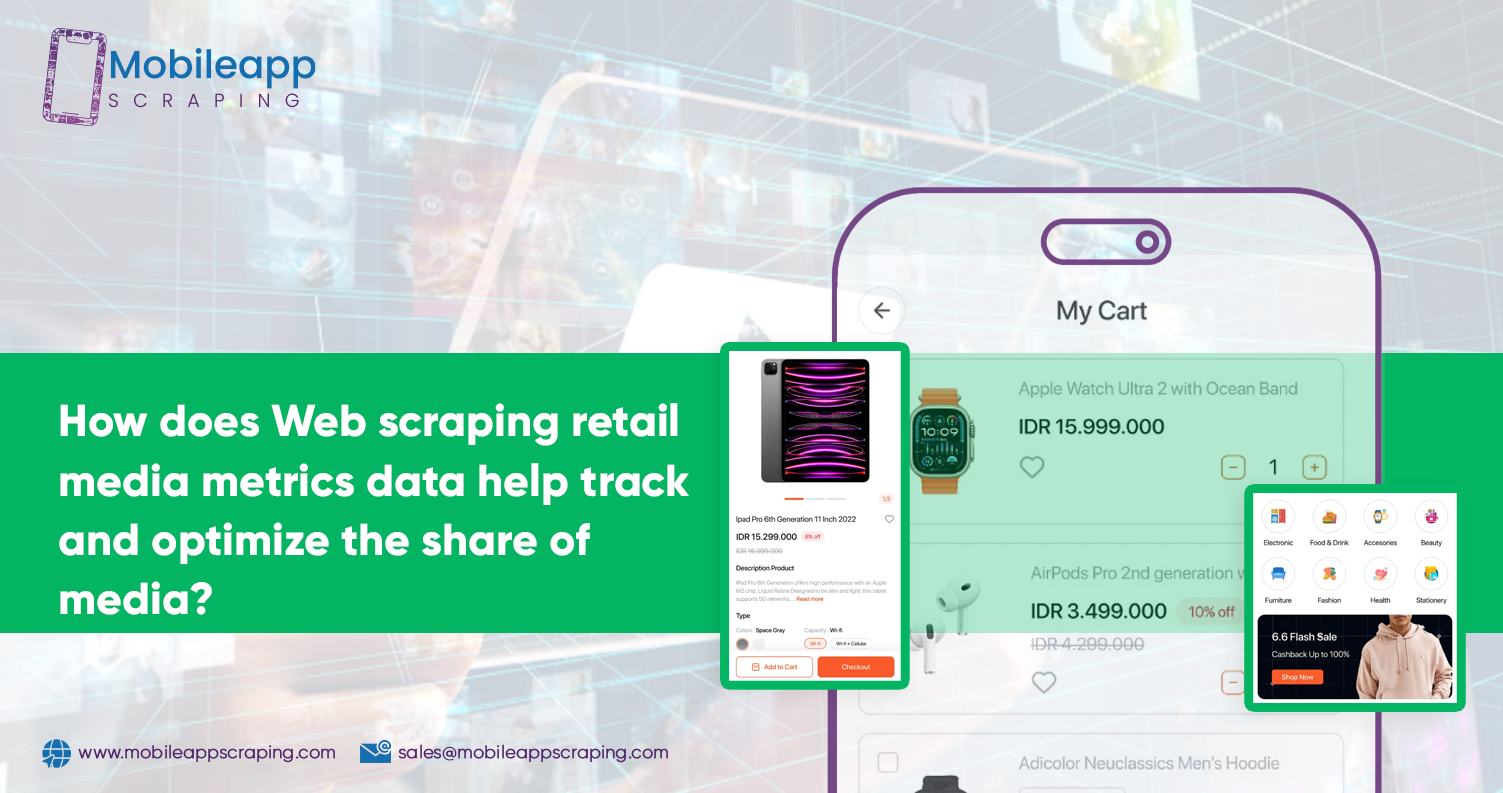
How does Web scraping retail media metrics data help track and optimize the share of media?
Introduction
In the fast-evolving retail landscape, Web Scraping Retail Media Metrics Data is pivotal in helping brands track media share, analyze ad performance, and optimize retail media strategies with precision. As data-driven decision-making becomes increasingly vital, brands must understand how their advertising investments translate into measurable success.
By utilizing data extraction techniques, businesses can gain real-time insights into ad placements, competitor strategies, and market trends, allowing them to refine their approach for maximum impact. This article delves into the significance of Web Scraping Service Retail Media Metrics Data and how it empowers brands to enhance their media share and advertising effectiveness.
Understanding Retail Media Metrics and Their Importance
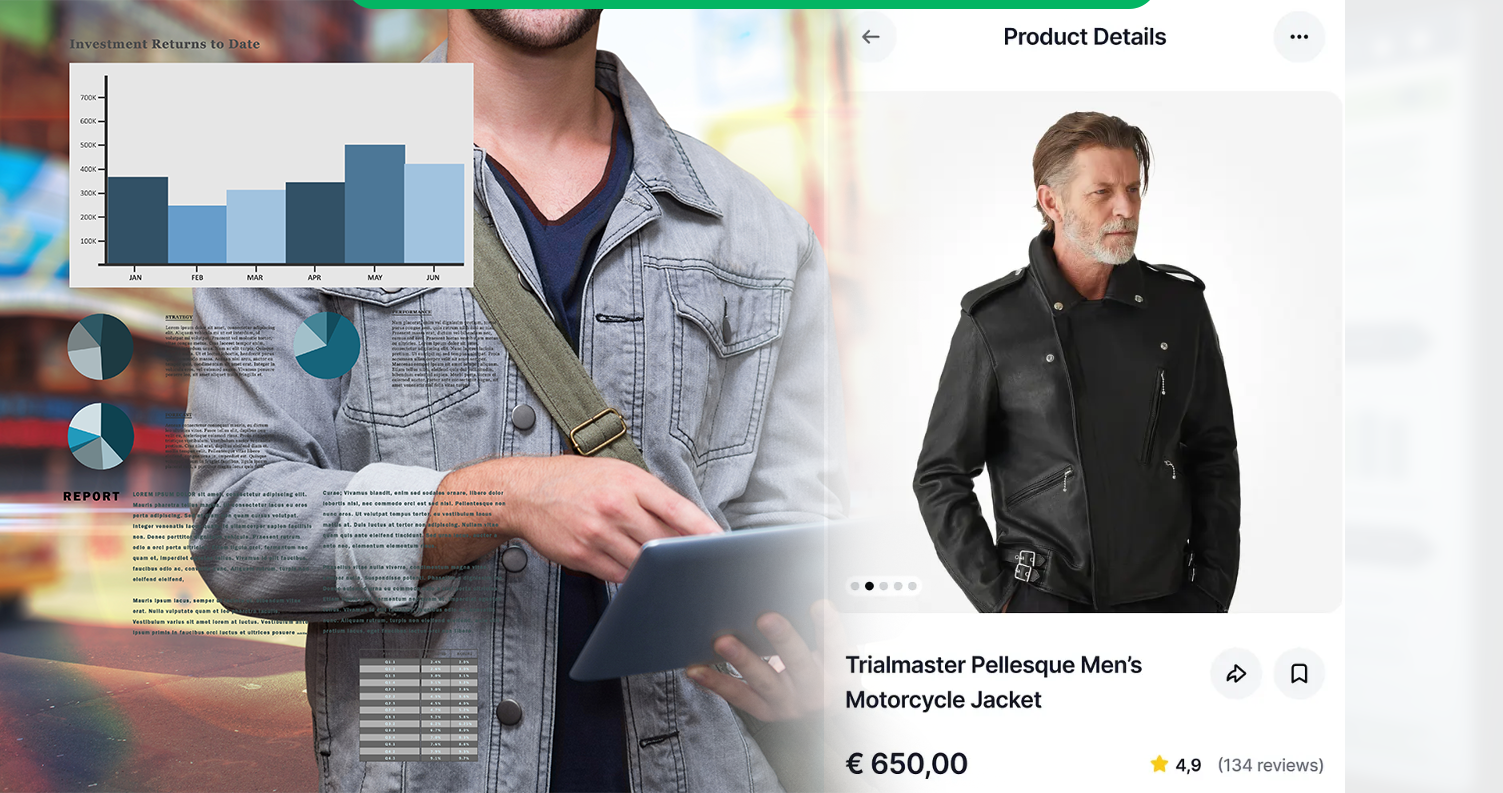
Retail media metrics serve as essential performance indicators, offering insights into key aspects such as ad visibility, conversion rates, engagement levels, and share of voice. These metrics enable brands to evaluate the effectiveness of their retail media campaigns with precision.
The systematic collection and analysis of these data points empower businesses to:
- Evaluate ad performance across multiple retail platforms, ensuring optimal reach and impact.
- Track competitor strategies by analyzing their ad placements and campaign approaches.
- Identify top-performing ad creatives, allowing for strategic campaign optimization.
- Maximize return on ad spend (ROAS) through data-driven decision-making and budget allocation.
By leveraging Retailer Media Data Scraping, companies can automate data collection processes, ensure real-time insights, and gain a competitive edge in the ever-evolving digital retail landscape.
The Role of Web Scraping in Tracking Share of Media
Tracking the Share of Media involves systematically monitoring a brand's advertisements across multiple online retail platforms to assess their visibility and effectiveness.
This process relies on comprehensive Web Scraping Retail Media Metrics Data, which plays a crucial role in evaluating key performance indicators, such as:
- Ad Frequency: How often a brand's advertisements appear in search results.
- Competitive Positioning: The ranking of ads in comparison to competitors.
- Customer Engagement: Metrics including clicks, views, and conversions.
- Ad Placement Trends: Changes in advertising positions over time.
By utilizing a Web Scraping Retail Media dataset, brands can extract actionable insights from diverse e-commerce and advertising platforms, helping them optimize strategies and sustain a strong media presence.
Optimizing Retail Media Strategies with Web Scraping
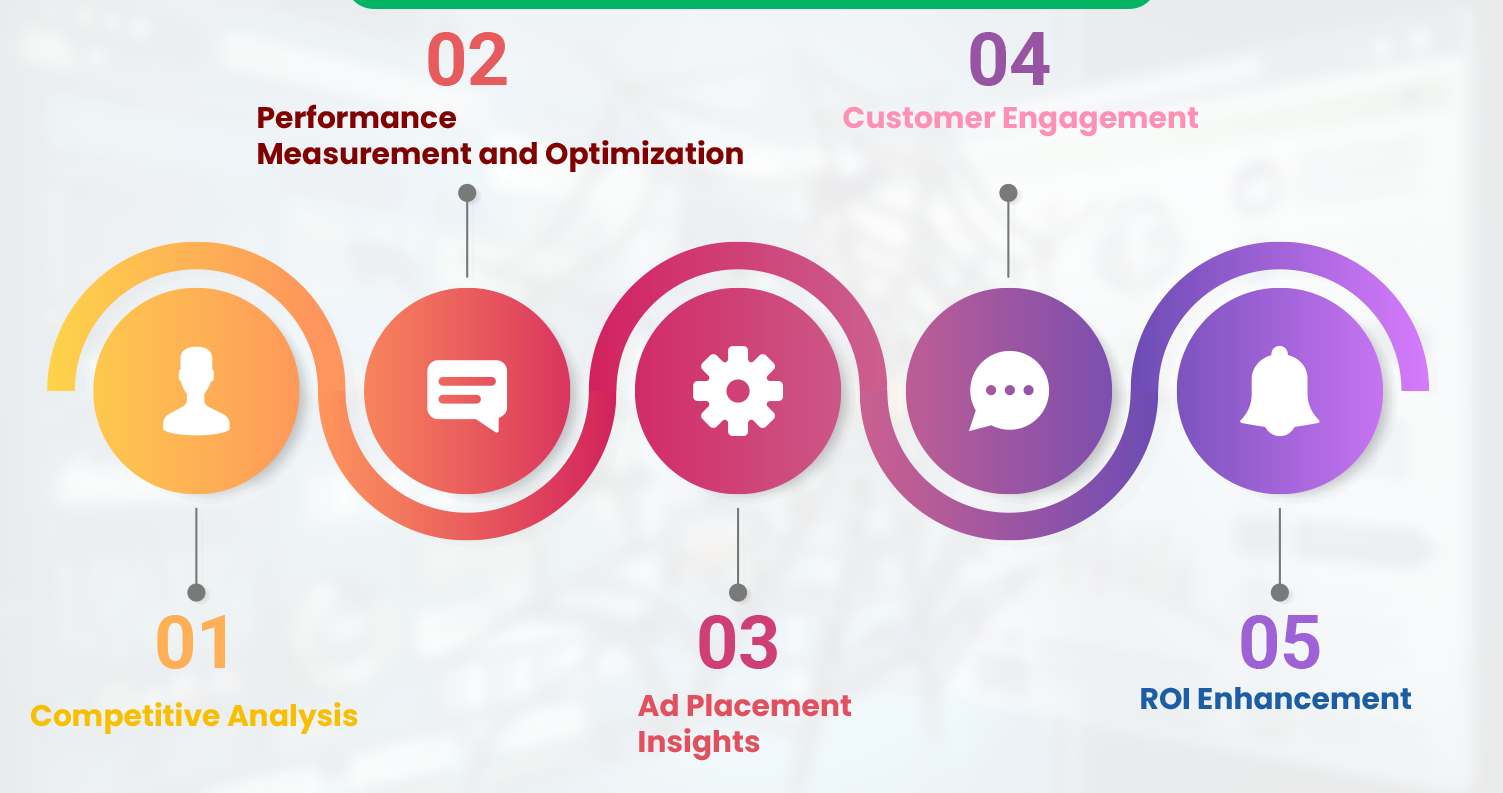
Once businesses track their media share, optimizing their retail media strategies is the next crucial step. Leveraging Web Scraping for Retail Insights enables brands to refine their approach in several key areas:
Competitive Analysis
With Retailer Media Data Scraping, brands can monitor competitor advertising tactics to stay ahead. By analyzing ad placements, keyword strategies, and pricing models, businesses gain the insights needed to fine-tune their marketing efforts and strengthen their competitive edge.
Performance Measurement and Optimization
Continuous data extraction and analysis allow businesses to optimize ad strategies effectively. Using Web Scraping Like and Share media, companies can track user engagement, identify high-performing ads, and refine their campaigns based on audience preferences.
Ad Placement Insights
Strategic ad placement is key to maximizing visibility. With Web Scraping Retail Data, businesses can identify high-performing ad slots and allocate budgets more efficiently to ensure their ads reach the right audience at the right time.
Customer Engagement Trends
Understanding consumer behavior is essential for engagement-driven marketing. Scrape Retail Data Metrics provides insights into likes, shares, and interactions, helping brands create compelling content and boost audience engagement.
ROI Enhancement
Businesses can make data-driven budget decisions by extracting valuable insights through extract Retail Media Metrics data. Focusing on high-impact strategies ensures better resource allocation and improved return on investment (ROI).
Challenges in Web Scraping Retail Media Data and How to Overcome Them
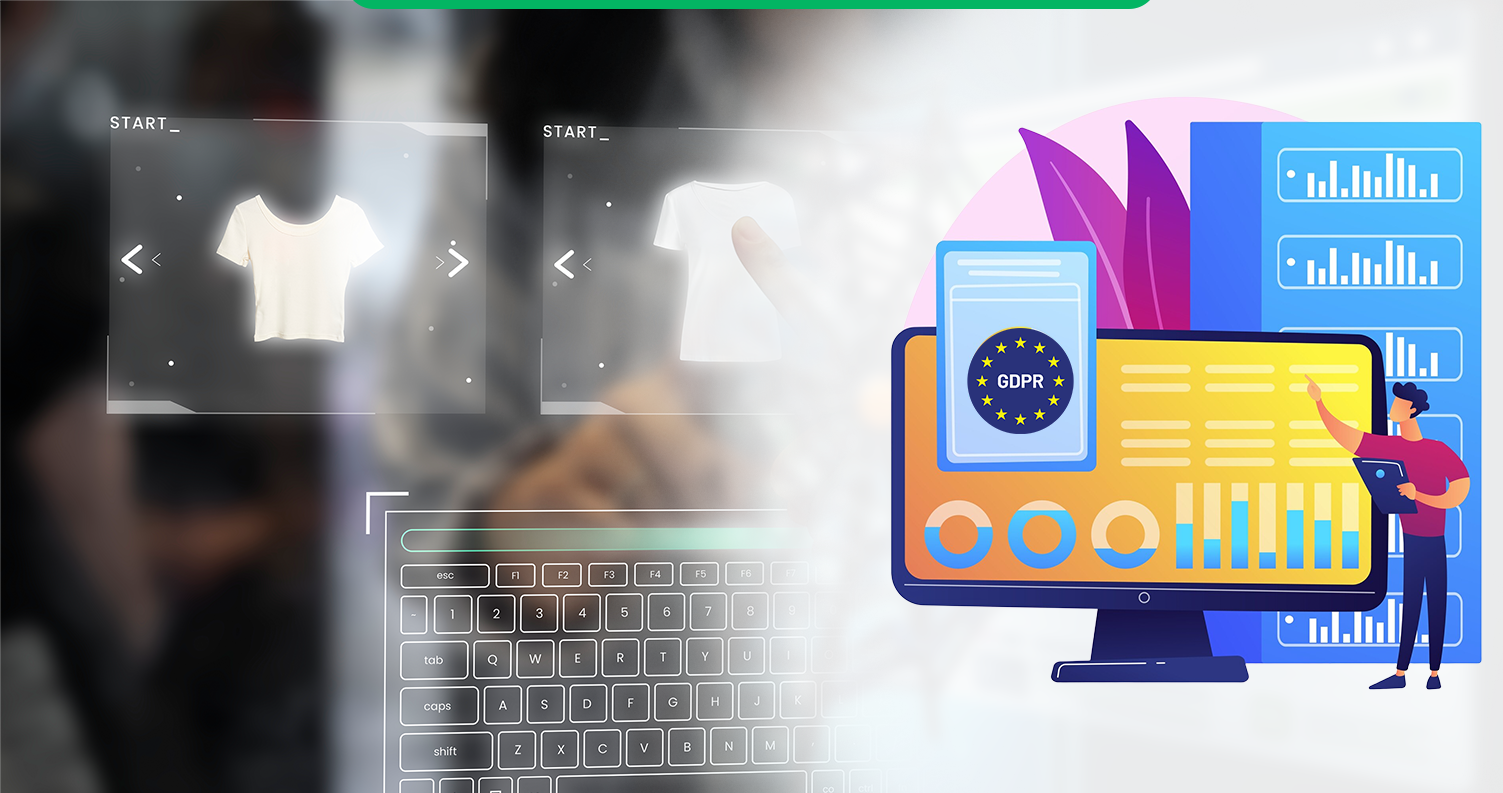
While scraping retail media data offers valuable insights, businesses must navigate several challenges to ensure efficiency and compliance.
These include:
- Anti-scraping measures: Many websites actively deploy security protocols to block automated data extraction, making it challenging to collect information at scale.
- Data accuracy and consistency: Extracted data must be appropriately structured and relevant to ensure meaningful analysis. Any inconsistencies can impact decision-making.
- Legal compliance: Ethical data scraping requires strict adherence to regulations such as GDPR, ensuring that data collection practices are lawful and transparent.
To tackle these challenges effectively, businesses should invest in robust data scraping tools, utilize rotating IPs to bypass restrictions, and strictly adhere to legal data extraction guidelines.
Future Trends in Web Scraping Retail Media Metrics Data

The future of Web scraping media data is evolving rapidly and is driven by cutting-edge technological advancements.
Key trends shaping this space include:
- AI-powered scraping tools significantly enhance data extraction efficiency by automating complex processes and improving accuracy.
- Real-time analytics enables instant insights into ad performance and helps businesses make data-driven decisions faster.
- Integration with machine learning models allows for more precise advertising trends and consumer behavior predictions, leading to more effective marketing strategies.
- Increased automation, streamlining the entire data collection and optimization process, reducing manual efforts while improving scalability and reliability.
These innovations are set to revolutionize how businesses leverage Web Scraping media data, ensuring more intelligent and efficient data-driven decision-making.
How Mobile App Scraping Can Help You?
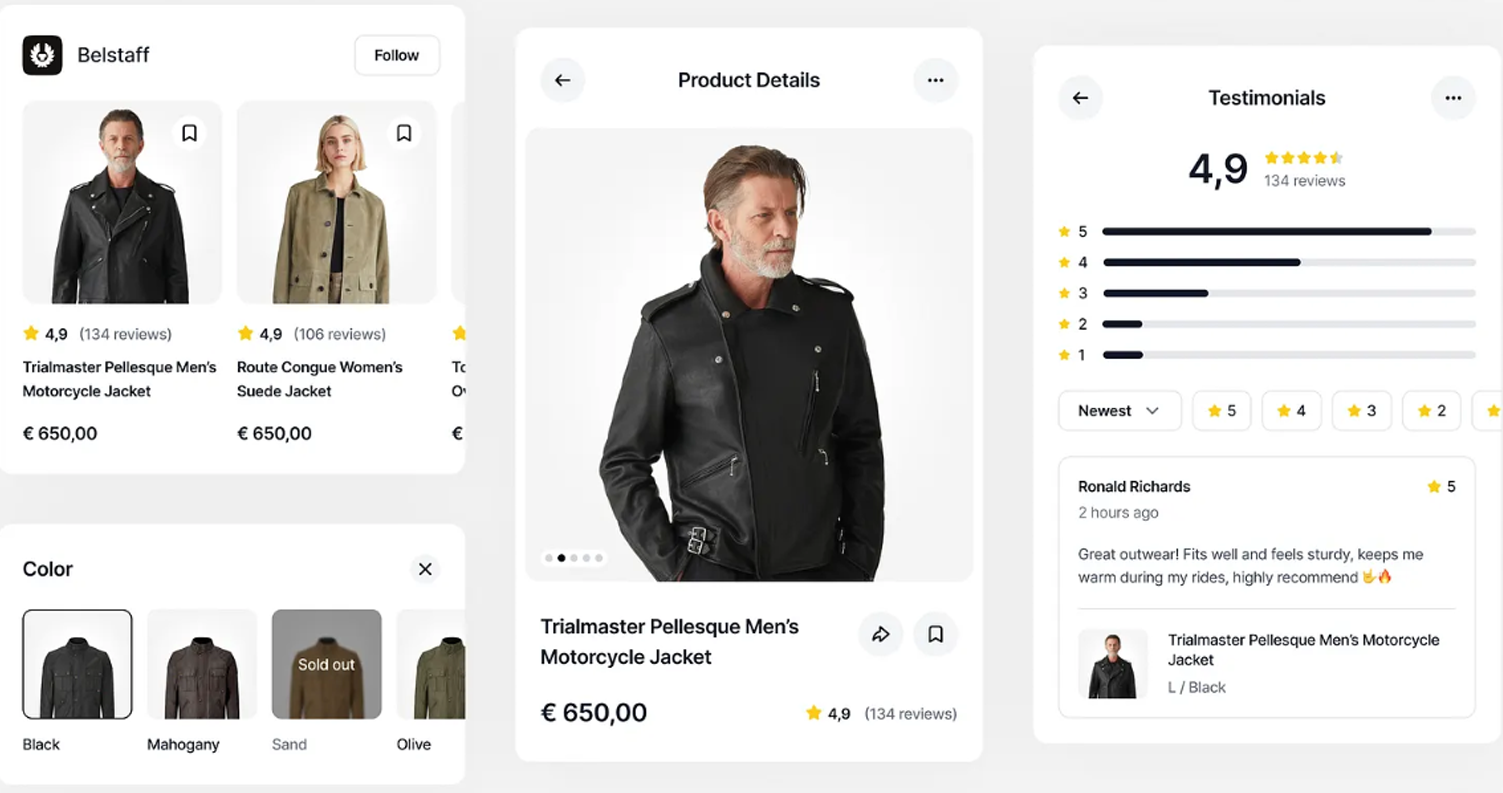
As mobile commerce continues to thrive, businesses must harness valuable insights from mobile applications to enhance their retail media strategies.
This is where mobile app scraping plays a pivotal role, offering several key advantages:
- Tracking In-App Ads: Evaluate the performance of ads within mobile apps and fine-tune strategies for better engagement.
- Monitoring Competitor Presence: To stay ahead, identify where and how competitors place ads and their promotional strategies.
- Analyzing User Engagement: Gain deeper insights into how users interact with ads and content within mobile applications to optimize user experience.
- Optimizing Mobile Campaigns: Leverage real-time data to refine and enhance the impact of mobile advertising campaigns.
- Extracting Pricing and Product Data: Collect crucial insights on product availability, pricing trends, and promotional offers across multiple apps.
By integrating mobile app scraping into their strategy, businesses can unlock critical data-driven insights, optimize advertising efforts, and maintain a competitive edge in the fast-evolving retail media landscape.
Conclusion
Tracking and optimizing media share is crucial for brands striving to maintain a competitive edge in the dynamic retail landscape. Our Web Scraping Retail Media Metrics Data empowers businesses with actionable insights to enhance ad performance, customer engagement, and return on investment. Using advanced data scraping techniques, brands can gain real-time market intelligence and make data-driven decisions to optimize their advertising strategies.
Our expert Web Scraping Retail Media dataset solutions can provide your competitive advantage if you want to extract valuable insights and refine your strategies. Contact Mobile App Scraping today to explore how we can support your success in the retail media space!